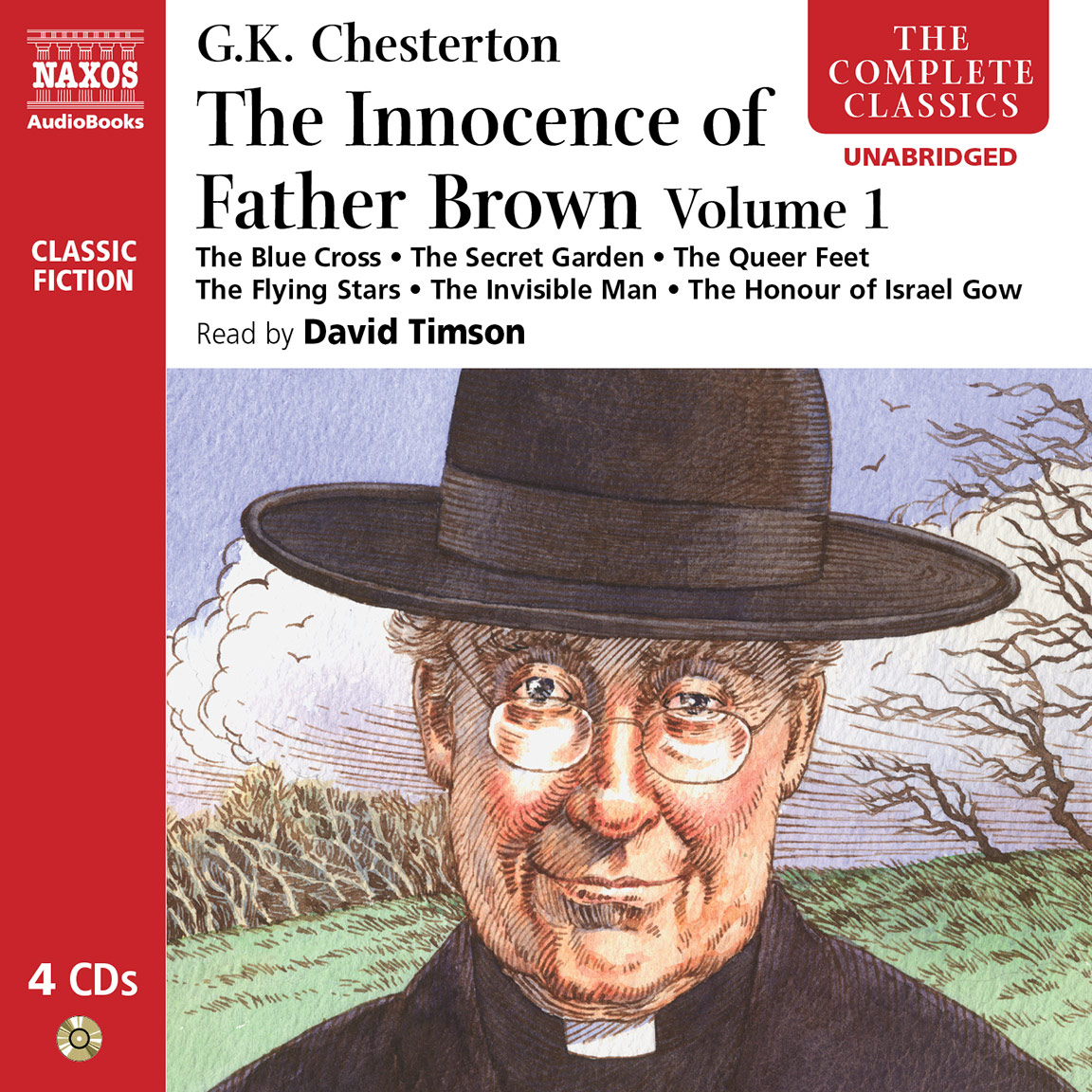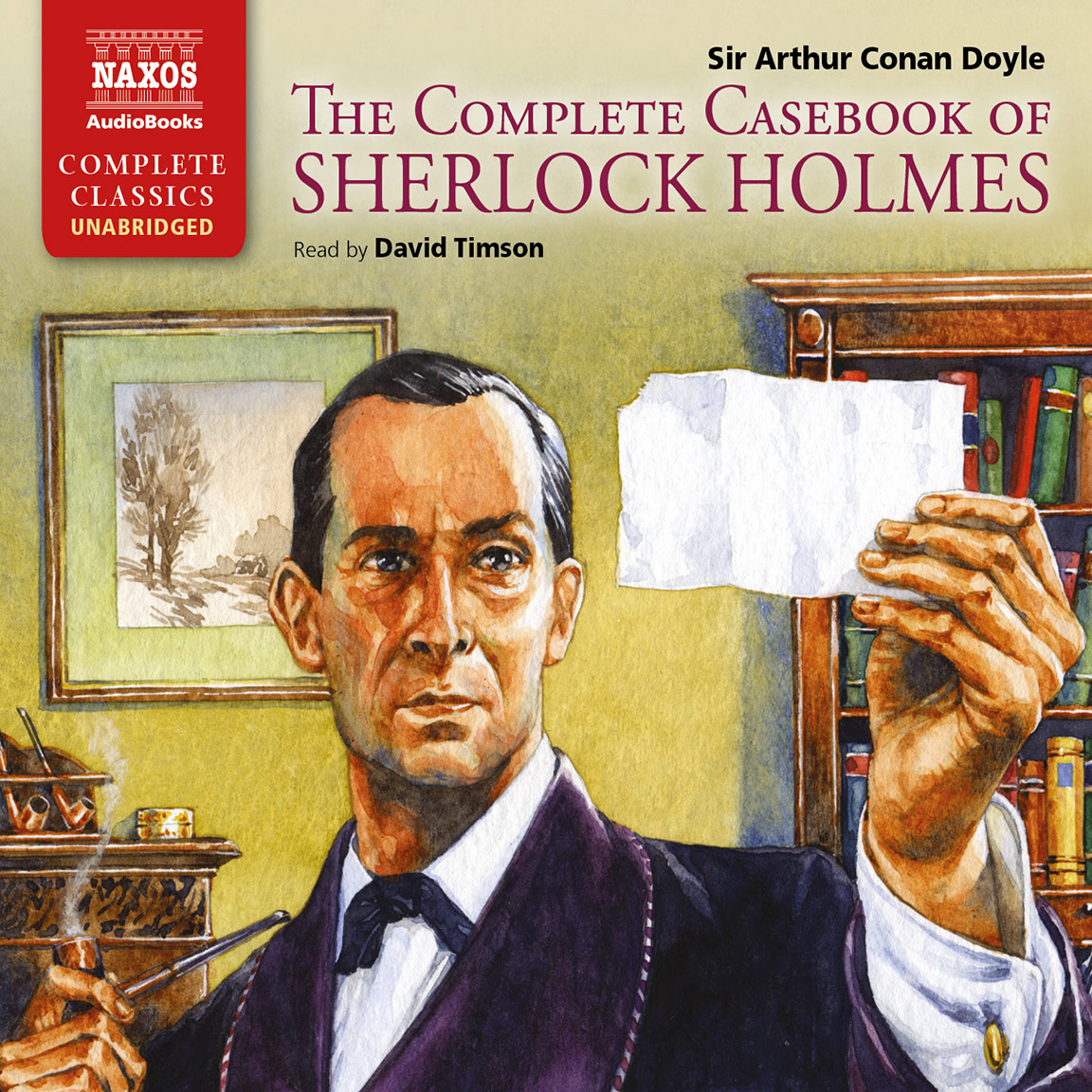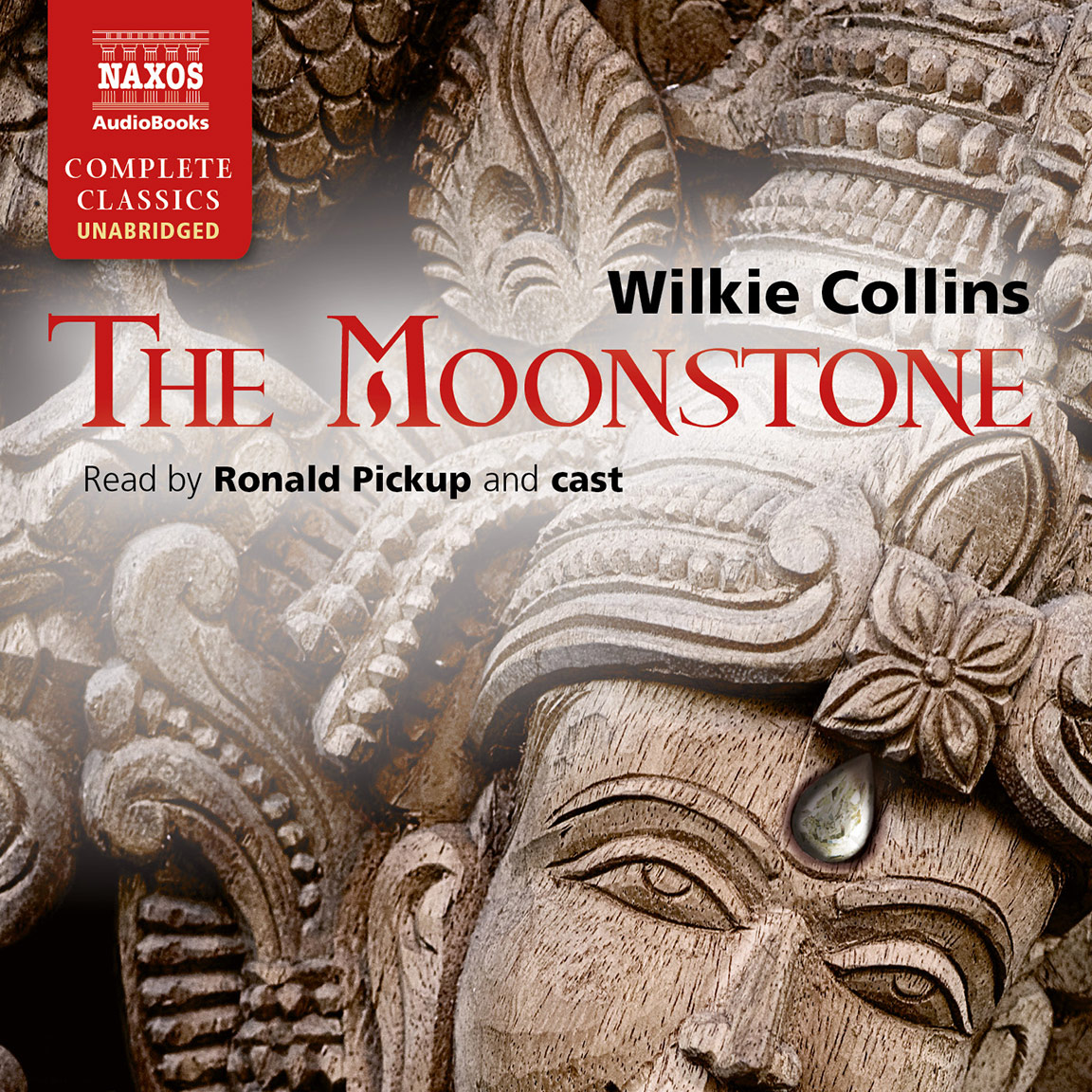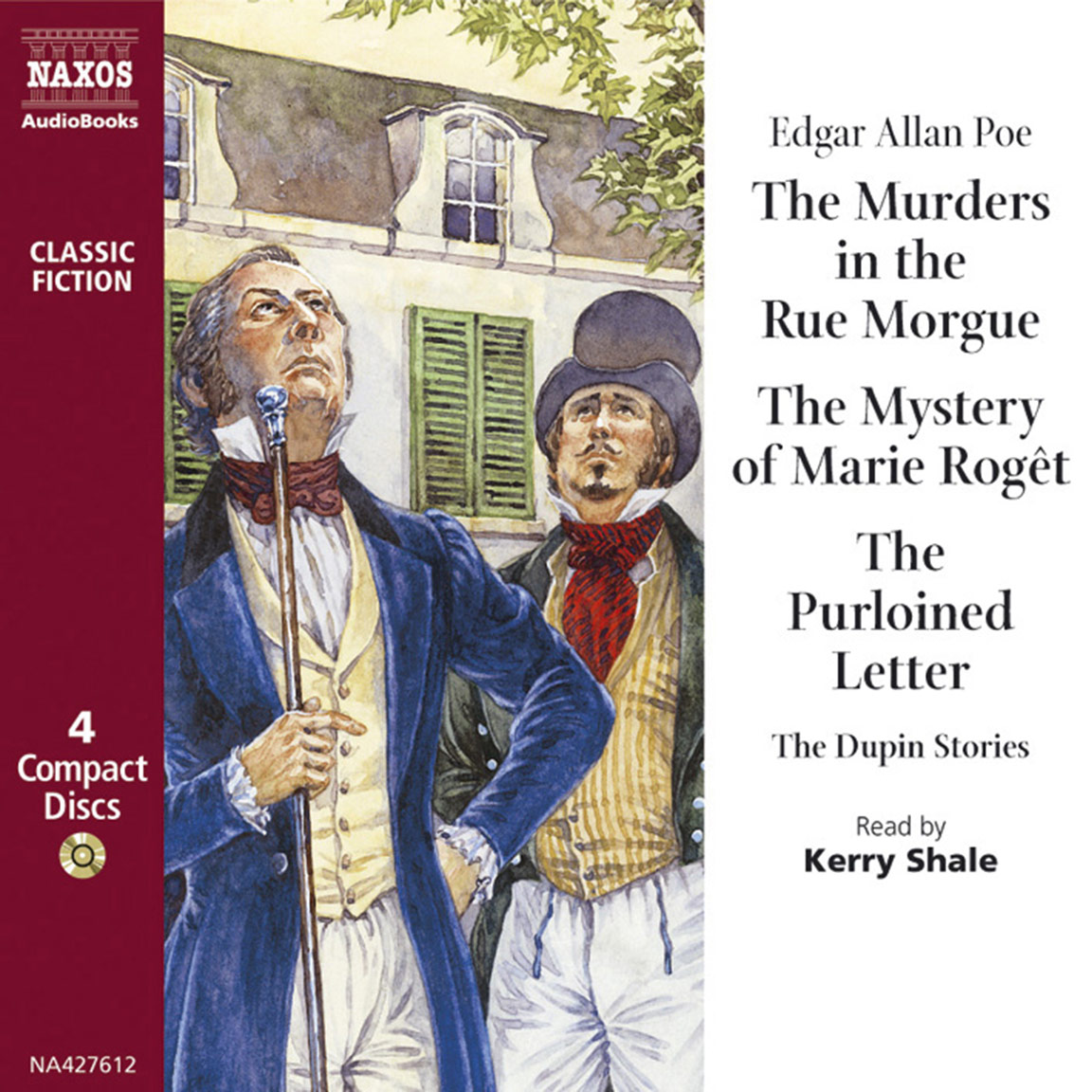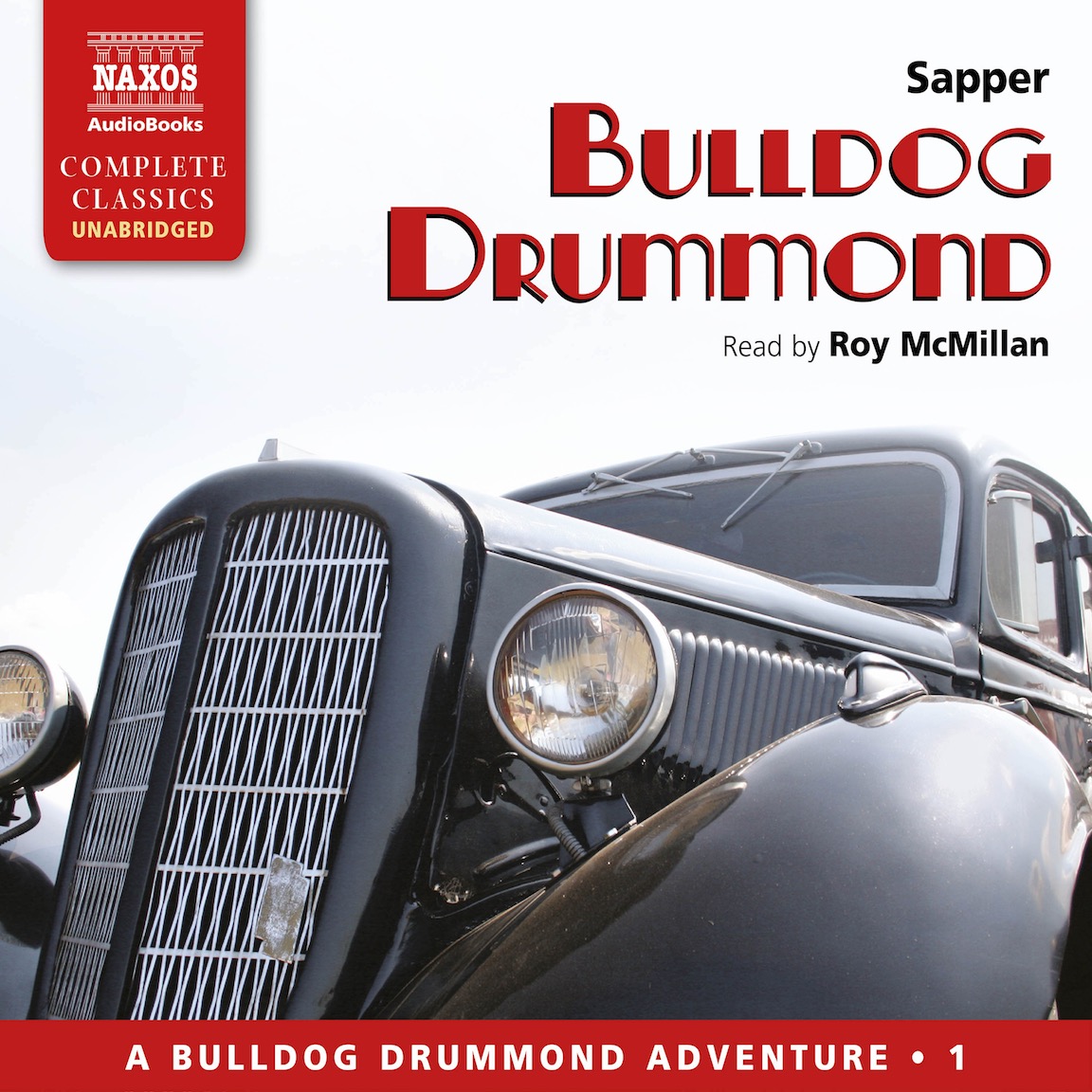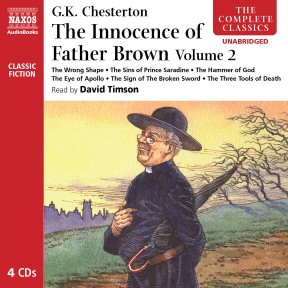
Audio Sample
G.K. Chesterton
The Innocence of Father Brown – Volume 2
Read by David Timson
unabridged
Here are the six final stories from The Innocence of Father Brown relating the crime-solving adventures of a rather unconventional detective. Having accumulated wisdom and empathy from years of listening to the dark confessions of his parishioners, Father Brown is able to solve mysteries in a flash that confound all others. Here is an eccentric and loveable character that will appeal to fans of the legendary sleuth, Sherlock Holmes. The stories are engagingly read by David Timson. The Wrong Shape, The Sins of Prince Saradine, The Hammer of God, The Eye of Apollo, The Sign of the Broken Sword and The Three Tools of Death.
-
Running Time: 4 h 35 m
More product details
ISBN: 978-962-634-973-1 Digital ISBN: 978-962-954-872-8 Cat. no.: NA497312 Download size: 67 MB BISAC: FIC004000 Released: June 2010 -
Listen to this title at Audible.com↗Listen to this title at the Naxos Spoken Word Library↗
Due to copyright, this title is not currently available in your region.
You May Also Enjoy
Reviews
Great detectives in printed fiction (forget about those created for television) are sometimes hard to tell apart. Sherlock Holmes is unmistakable, but he might be mistaken for Poe’s Dupin of The Murders in the Rue Morgue by one unfamiliar with both. Nero Wolfe is unique, seldom leaving his office and depending on reports from his assistant. Another one-of-a-kind sleuth is the Catholic priest, Father Brown.
He appeared for the first time in 1911 from the pen (or typewriter) of G.K. Chesterton. Unlike other detectives being invented at that time, he does not look so much at clues as at the way people act. Being a priest, he has heard enough confessions to give him an insight into the thinking patterns of criminals. Of course, Chesterton is careful to supply enough information for his character to put the pieces together, sometimes beyond the bounds of reason.
For example, in one tale Brown prevents a crime by analyzing the pattern made by a series of footsteps outside a door! In another, he realizes that because a man is found with an arrow in his back, it did not have to come from a bow. And so on. Religious matters are used only to further the plot, not to convert a character or the reader.
So at present, I am having a wonderful time listening to two Naxos boxed AudioBooks titled The Innocence of Father Brown, Volumes 1 and 2 respectively.
The first includes unabridged readings of The Blue Cross, The Secret Garden, The Queer Feet, The Flying Stars, The Invisible Man, and The Honour of Israel Gow. The second holds The Wrong Shape, The Sins of Prince Saradine, The Hammer of God, The Eye of Apollo, The Sign of the Broken Sword, and The Three Tools of Death. Each is as much fun as the title, with added spice provided by the master thief (soon to reform and become a detective) Flambeau and the intrepid (but soon to go too far) French detective Valentine. But in such recordings, much depends on the reader; and here, veteran Naxos narrator David Timson does his usual splendid job in keeping the pace moving and the listener riveted.
Frank Behrens, Art Times, Brattleboro Reformer, Bellows Falls Town Crier, Keene Sentinel
Volume Two of this fine audio series contains six more of Chesterton’s Father Brown tales from “The Innocence of Father Brown” collection. In the short booklet that accompanies the audio disks, J.D. Evans mentions that Chesterton’s tales often concern madness and its link to evil. These six stories illustrate this theme. In each of these tales, Father Brown solves some mystery by combining his knowledge of the capacity of humans to do evil deeds with his powers of observation and his reasoning abilities. Chesterton weaves his tales in such a way that Father Brown can cleverly deduce the real state of affairs in the face of circumstantial “evidence.” In these six tales, Father Brown proves that a suspected suicide is actually a murder; that a suspected murder is actually a suicide; that a suspected accidental death is actually a murder; that a legend about a military hero is a cover-up of treason; an imposter was killed in a duel; and that the most obvious suspect did not commit a gruesome murder. As in the first volume of this series, David Timson’s semi-voiced reading is excellent. Timson has made more than 1,000 broadcasts for BBC Radio Drama and has read the entire Sherlock Holmes Canon for Naxos Audio. He makes good use of a broad range of accents and voices here to capture the wide variety of aristocratic and working class characters.
Hugh M. Flick, soundcommentary.com
Booklet Notes
G.K. Chesterton’s ‘Father Brown’ stories were written in the first great age of detective fiction when the market was flooded with imitations of that great prototype of fictional detectives, Sherlock Holmes, created by Arthur Conan Doyle in 1887.
Father Brown is, however, no pale imitation; whereas Holmes is given an imposing physique and strong facial features that reflect his unusual intellect and impress the reader with his aptness for the job of detecting, Father Brown is significantly unmemorable. Small, with no distinguishing features but a singularly blank moon-face, he is clad in the anonymous dress of the Catholic priest. No magnifying glass, deerstalker or pipe accompanies him on his adventures, just a pair of spectacles and a large, old umbrella. Yet more by intuition than deduction, Father Brown solves the most seemingly impossible conundrums and crimes that comprise the 52 short stories in which he appears. And, in complete contrast to Holmes’s procedures, he has more use for philosophy than science in his investigations.
First and foremost Brown is a priest, and it is his parochial experiences that have helped him to develop his detective skills. Listening to the secret confessions of his parishioners has given him a unique insight into the extent and diversity of human evil. This knowledge, combined with reasoning and observation, is the core of his method, and the stories always end with a rational explanation, revealed by the self-effacing priest. His ultimate belief in the spiritual power of God will not let him accept superstitious explanations. ‘Superstition is irreligious,’ he says in The Wrong Shape. The supernatural God is, to him, the greatest reason of all. Father Brown is a philosophical detective, an educated cleric who has arrived at his faith from a rational and intellectual viewpoint, very much like his creator, G.K. Chesterton, who based the character on Father John O’Connor (1870–1952), a parish priest in Bradford who was involved in Chesterton’s conversion to Catholicism in 1922.
Father Brown summed up his method in The Secret of Father Brown (1927): ‘You see, I had murdered them all myself… I had planned out each of the crimes very carefully. I had thought out exactly how a thing like that could be done, and in what style or state of mind a man could really do it. And when I was quite sure that I felt exactly like the murderer myself, of course I knew who he was.’
The perfect vehicle for conveying Chesterton’s view of the world, Father Brown is perhaps the most auto-biographical of the author’s characters. As a representative of the Catholic faith (to which Chesterton converted in 1922) and a champion of Orthodoxy, Father Brown was able to wage war on the anarchy of the modern world on his creator’s behalf. By imagining improbable locations in which the ubiquitous Father Brown might appear, Chesterton was using the little priest to personify the universal power of the Catholic Church.
THE WRONG SHAPE
The dull suburbs of North London are given an exotic oriental twist in this story of a murdered poet, Leonard Quinton. ‘He was a man who drank and bathed in colours, who indulged his lust for colour somewhat to the neglect of form – even of good form,’ writes Chesterton – who has ironic fun at the expense of the decadent poets of the 1890s, such as Wilde, Dowson and Baudelaire. In Father Brown’s words ‘The colours [in Eastern art] are intoxicatingly lovely; but the shapes are mean and bad’, Chesterton is perhaps expressing his own reactionary opinion of the then-current fascination for anything Eastern.
THE SINS OF PRINCE SARADINE
Once again Father Brown meets an improbable situation in an unlikely environment: an Italian Prince living in exile in Norfolk in a bamboo house. ‘We have taken a wrong turn and come to a wrong place’, Father Brown declares to his friend Flambeau whom he has accompanied on a boating trip on the rivers and backwaters of rural Norfolk, and in so doing stumbles upon a bizarre tale of revenge and deception linked to a European vendetta worthy of the Mafia. But as Father Brown comments, ‘One can sometimes do good by being the right person in the wrong place.’
Chesterton didn’t have any great yearning for the country life. London and cities in general – with all their unknown possibilities – were of endless fascination for him. He once dedicated a poem to his friend Hilaire Belloc, who lived in deepest Sussex:
‘You saw a moon on Sussex downs
A Sussex moon, untravelled still;
I saw a moon that was the town’s –
The largest lamp on Campden Hill.’
THE HAMMER OF GOD
Chesterton’s lack of desire to connect with the modern world led him often to create in his stories a fantasy world akin to the Middle Ages, a time which he idealised as being as near to a perfect world as he could imagine. He did not accept the Liberal idea that society was continually progressing and that society was therefore in a better position in the 20th century than in the 12th. Throughout his works Chesterton makes references to a time of stalwart Christian men believing in one faith, as exemplified by the Catholic Church.
The Hammer of God exists in such a world, despite its obvious references to modernity. It concerns a fanatical Catholic priest who, like a member of the Inquisition, seeks to convert his wayward brother, while the ‘peasants’ gather round to watch in wonder. There is even a village idiot. In the blacksmith and his wife we have Chesterton’s idealised medieval man and woman, the latter usually being red-haired. (Chesterton had a fascination for red-haired women.)
THE EYE OF APOLLO
Chesterton’s leaning towards orthodox religion meant that he was out-of-step with his age; he reacted strongly against 20th-century modernity. Living in the age that saw the emancipation of women, Chesterton could not accept it; he was not anti-feminist as such, but resented the idea of either sex exalting over the other. His portrait in this story of an independent career woman, Pauline Stacey, makes these views quite plainly. He describes her profile ‘as of the clean-cut edge of some weapon. She seemed to cleave her way through life.’ Pauline displays ‘a frigid fierceness (peculiar to the modern woman),’ Chesterton adds with distaste. He had a horror that women would enter politics, for which he felt they were unfitted. ‘They understand everything,’ he wrote in the Illustrated London News, ‘except three things – Liberty, Equality, Fraternity.’
His other target in this story is the false prophet, the charlatan preacher Kalon, the self-styled new Priest of Apollo who uses religion and the public’s susceptibility for novelty for his own ends. Although not yet a Catholic when he wrote this story, Chesterton was showing that his sympathies lay with an Orthodox faith rather than with the new religions of Christian Science or the revival of interest in Theosophy.
THE SIGN OF THE BROKEN SWORD
‘Where would a wise man hide a leaf?’ asks Father Brown at the start of this story of treachery and deceit in the British Army. The priest knows that no amount of Imperial pomp and circumstance will ultimately conceal tyranny or treachery, for they are human failings, and he is an expert on the weaknesses of the human heart.
Chesterton was an avowed patriot, but no Imperialist. He would have viewed with disdain the list of General Sir Arthur St Clare’s victories in India, Africa and Brazil. He considered that the pursuit of Empire tarnished the simpler impulse of patriotism. Once again he was yearning for the past, when simple virtues, like the Christian faith to which he was drawn, were unchallenged.
Chesterton’s views were directly opposed to those of his contemporary, Rudyard Kipling, whom he considered a rampant Imperialist. They were, however, great friends.
THE THREE TOOLS OF DEATH
Why was the popular philanthropist Sir Aaron Armstrong murdered? How could anyone dislike such a jovial character? ‘People like frequent laughter,’ observes Father Brown, ‘but I don’t think they like a permanent smile.’
In this story Chesterton dwells on the darker psychology of mankind. In his youth he had been troubled with thoughts of suicide, and while studying at the Slade School he had begun to feel that the physical world might all be a figment of his imagination. It seems that his highly developed sense of humour saved him from insanity: he overcame his morbid fears, put on weight, and became ‘a full-girthed giant, shaking with Gargantuan laughter’. Chesterton never entirely lost his fascination with the darker side of the human mind, however, for which we should be grateful. A constant theme of the Father Brown stories is madness, and its link to evil.
Notes by David Timson
